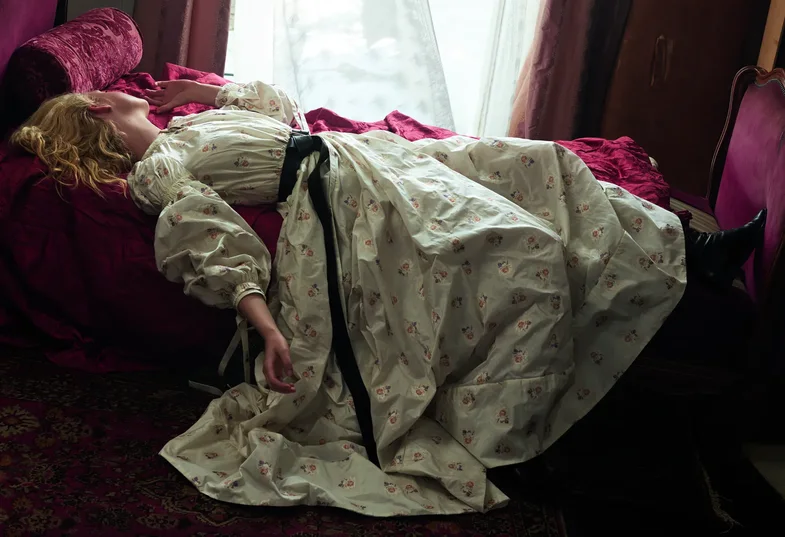
Like many things in life, iron deficiency symptoms can occur in you. For any of you, many of these signs are quite generic, so it's easy to assume they're something else. In fact, many of the symptoms can appear so gradually that you may not notice them at first.
But despite the sometimes elusive symptoms of iron deficiency, the condition is surprisingly common, especially in women. In fact, a recent study suggests that moderate iron deficiency among premenopausal women may be as high as 30 percent.
This is quite a high number. After all, iron makes up 5 percent of the earth's crust and is one of the most abundant minerals around. And, if you're eating a balanced diet, one that includes greens, legumes, red meat, eggs, fish, whole grains, nuts, and dried fruit, it should be fairly easy to get enough iron through your diet alone.
What role does iron play in the body?
"Iron is one of the most important nutrients in our diets, as it helps various proteins deliver oxygen throughout our bodies," explains Dr. Jacey Folkers. Specifically, those proteins are hemoglobin and myoglobin, which carry oxygen to the lungs and muscles through red blood cells.
When our red blood cells do not have enough oxygen, iron deficiency anemia, the most common type of anemia in the world, can occur. "This deficiency can affect health and factors related to aging, such as muscle strength, energy levels and cognitive abilities," says Anant Vinjamoori, Chief of Medicine at Modern Age. "It is essential to maintain a balanced iron level."
How much iron do we need per day?
The amount of iron an individual needs each day will vary; it depends on your age, gender and diet. In general, women need more iron than men, and vegetarians need more iron than meat eaters. According to the National Institutes of Health, adult women should aim for 18 mg of iron per day, while adult men should aim for 8 mg. Vegetarian women should aim for about 32 mg per day and vegetarian men should aim for about 14 mg, nearly twice as much as their meat-eating counterparts.
Who is at risk of iron deficiency?
As mentioned, iron deficiency is especially common in menstruating women, but it can affect anyone, including men, the elderly, and children.
What are the signs of iron deficiency?
Ja ku gjërat bëhen të ndërlikuara. Mungesa e hekurit mund të shkaktojë padyshim simptoma, por shumë prej tyre janë aq të zakonshme sa mund t'i atribuohen lehtësisht gjërave të tjera si mos pirja e mjaftueshme e ujit, mungesa e vitaminës B12 ose luhatjet hormonale.
Përtej simptomave të zakonshme, ekzistojnë pesë shenja të pazakonta të mungesës së hekurit ndaj të cilave duhet të keni kujdes:
1. Një gjuhë e përflakur
Kjo është serioze, sepse mund të vështirësojë përtypjen dhe gëlltitjen, gjë që nga ana tjetër mund ta bëjë edhe më sfidues konsumimin e mjaftueshëm të lëndëve ushqyese. Pra, kini kujdes për çdo ënjtje të gjuhës, dhimbje ose ndryshim në mënyrën e shijes së ushqimeve. Dhe, mos harroni të shikoni në të gjithë gojën tuaj, ashtu si mungesa e hekurit mund të shkaktojë zbehje të lëkurës për shkak të mungesës së oksigjenit, gjithashtu mund të shkaktojë zbehje të mishrave të dhëmbëve.
2. Thonjtë e brishtë
“Edhe pse mund të duken të palidhura me pjesën tjetër të trupit tonë, thonjtë tanë në fakt mund të thonë shumë për shëndetin tonë”, thotë Dr. Folkers. Prandaj, të kesh thonj të dobët dhe të brishtë, mund të jetë padyshim një shenjë e mungesës së lëndëve ushqyese. Një gjendje e quajtur koilonychia, e cila bën që thonjtë të rriten si lugë, mund të jetë gjithashtu tregues i mungesës së hekurit.
3. Buzë të çara dhe gojë të thatë
Nëse asnjë sasi balsami ose hidratimi nuk ju rregullon buzët e plasaritura, kujdes. “Njerëzit me mungesë hekuri mund të përjetojnë një lloj të veçantë plasaritjeje të quajtur cheilitis këndor, i cili prek cepat e gojës tuaj”, thotë Dr. Folkers. "Trajtimi i keilitit këndor më vete me krem ??ose pomadë nuk do të ndihmojë: ju duhet të trajtoni mungesën themelore të hekurit për të parandaluar që plasaritja të kthehet përsëri dhe përsëri."
4. Dëshirat e çuditshme
Nëse befas keni dëshirë të madhe për substanca që nuk duhen ngrënë kurrë, si papastërtia, balta, qymyr, hir, pëlhura, karton ose mjete pastrami, është koha të porosisni pak gjak për veten tuaj. Dëshira për substanca jo ushqimore është një gjendje e quajtur Pica dhe ndërsa ndonjëherë mund të shkaktohet nga stresi, ankthi ose çështje të tjera të shëndetit mendor, është gjithashtu një shenjë e anemisë. Dhe nuk kufizohet vetëm në dëshirat për diçka krejtësisht të pangrënshme: dëshira për të përtypur akull apo edhe niseshte misri mund të jetë gjithashtu shenja e Pica-s së shkaktuar nga anemia.
5. Rënia e flokëve
Flokët ju duken më të hollë apo me më pak shkëlqim se zakonisht? Kjo mund të jetë një shenjë e mungesës së hekurit, veçanërisht kur ajo zhvillohet në anemi, e cila sipas disa studimeve mund të ndikojë negativisht në shëndetin e flokëve. Për fat të mirë, kjo është e riparueshme. "Kur folikulat e flokëve nuk marrin oksigjen të mjaftueshëm, ato kalojnë në një fazë pushimi dhe flokët bien dhe nuk rriten përsëri derisa anemia të përmirësohet," thotë Folkers.
Si të rregulloni mungesën e hekurit
If you are experiencing any of the above symptoms or suspect you have an iron deficiency, it is important to get checked to determine the underlying problems. And, don't wait. As Dr. Vinjamoori, “addressing iron deficiency is essential for overall health, preventing age-related diseases and ensuring optimal functioning throughout the aging process.
Fortunately, treatment for iron deficiency is fairly routine. For severe iron deficiency, your doctor may prescribe iron supplements or iron therapy. For mild to moderate deficiency, you will most likely be encouraged to increase your intake of foods that are rich in iron. In conclusion, it is important to always consult your doctor before making any decisions about your health.
Suggested Articles:







